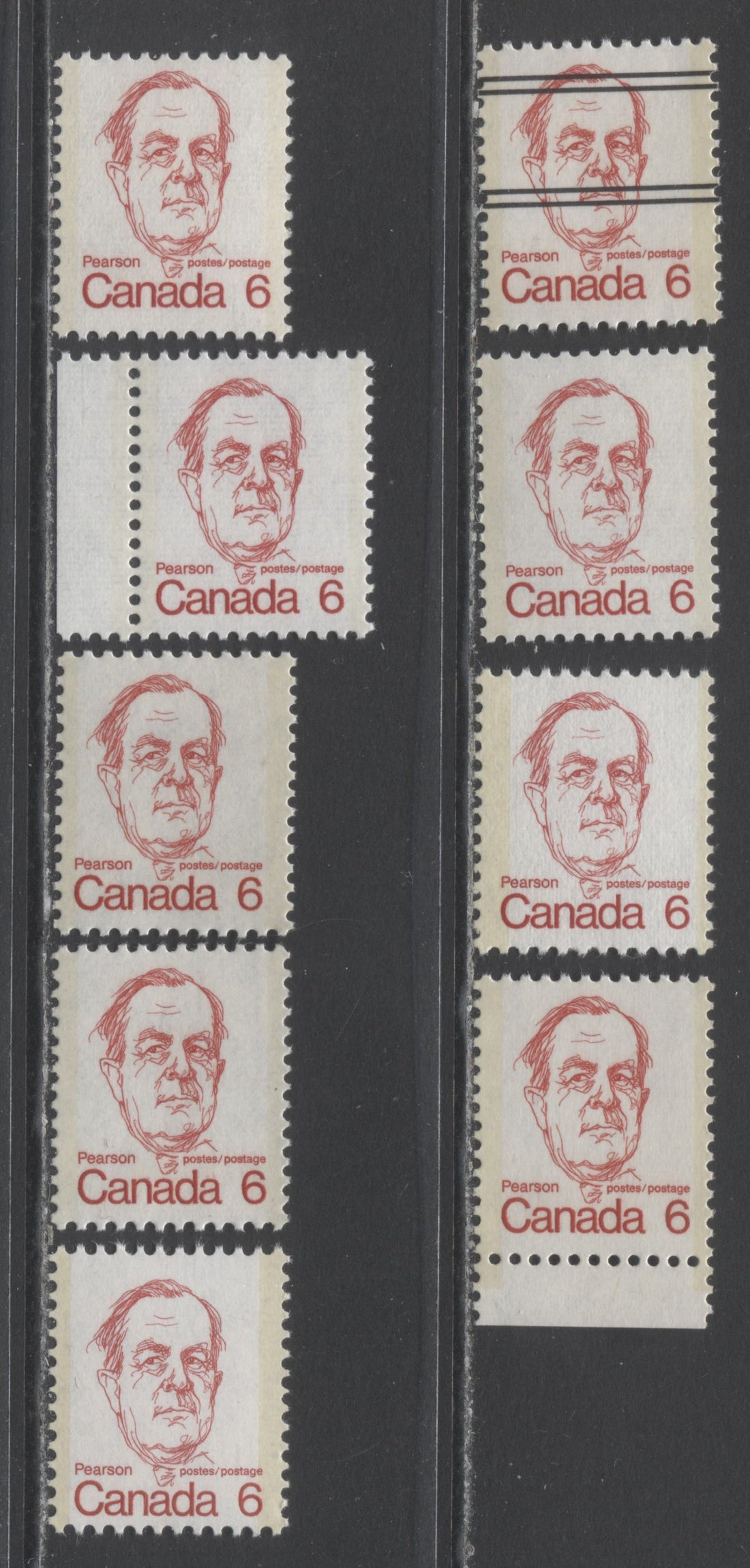Introduction
The low value Caricature definitive stamps of Canada offer an intriguing field of study, with numerous attributes that extend beyond the surface-level descriptions found in reference sources. While Unitrade and Harris provide valuable information, they only scratch the surface of the characteristics that can be observed and analyzed. This blog post aims to delve deeper into the unexplored attributes of these stamps, focusing on paper texture, variations in color under UV light, compound fluorescence readings, taggant intensities in normal light, perforation anomalies, and color shades. By understanding these often-overlooked attributes, collectors can expand their knowledge and appreciation for the intricacies of the low value Caricature definitive stamps.
Paper Texture
The low value Caricature definitive stamps exhibit a range of paper textures, including smooth, rough, horizontally ribbed, and vertically ribbed. While the smooth paper is the default type and is found on all values, the rough paper is exclusive to the non-fluorescent (NF) plate three printings of the 6c stamp. Horizontal ribbing can be observed on the 1c, 2c, 6c, and 8c stamps, while vertical ribbing is primarily listed on the 2c stamp, but exists on other values as well. Identifying ribbed paper requires magnification or backlighting, highlighting the subtleties of these unique paper variations.
Taggant Colour Under Normal Light
The appearance of tagging, which denotes the presence of fluorescent bars, can vary significantly under normal lighting conditions. From nearly invisible bars to deep brownish-yellow ones, the range encompasses light tagging (very light yellowish cream) and moderate tagging (creamy yellow). These variations in taggant intensities contribute to the diversity and visual appeal of the stamps.
Fluorescence and UV Color
Fluorescence on the low value Caricature definitive stamps is a complex characteristic, often exhibiting different fluorescence levels on the front and back of the stamps. While Unitrade has acknowledged this phenomenon, many unlisted combinations still exist. Under UV light, the color can vary from deep bluish grey to bluish to bluish white, adding an additional layer of intrigue to these stamps.
Color Shades
The color shades of the low value Caricature definitive stamps also present noteworthy variations. The 1c stamp showcases a deeper orange shade in addition to the standard orange, while the 2c stamp can be found in green, deeper green, and slightly brighter green variations. The 3c stamp typically appears in maroon, but duller and brighter versions can also be found. The 5c lilac stamp exhibits a rosier version alongside the normal shade, while the 6c stamp can be found in dull red, red, deep red, and deep bright red. The 7c stamp offers two shades of brown, with the CBN printing being deeper. The 8c and 10c BABN stamps are fairly uniform in ultramarine or dark carmine, but the CBN printings display a milky blue hue. The booklet stamps may feature pale versions of the normal colors, adding to the visual diversity within the issue.
Perforation Anomalies
The low value Caricature definitive stamps were the first to be comb perforated by CBN, who previously used line perforating. Comb perforating involves multiple strikes to perforate the sheets, and misalignments between successive strikes can occur. Collectors can find blocks or pairs that exhibit these misalignments, showcasing the challenges faced during the production process.
Conclusion
The exploration of uncharted attributes in the low value Caricature definitive stamps expands our understanding and appreciation of these


2 comments
Enjoy your effort in detailing some of the Canadian def series. Will pass on my current study of the insects, such as the smaller perf holes and duller black framing in identifying the Lowe-Martin 10 cent stamp.
Under the heading perforation Anomalies, you say “Comb perforating involves multiple strikes to perforate the sheets…”.
My understanding is that, in the comb perforation technique, the peroration pins arranged in the form of a grid strikes the sheet only once.